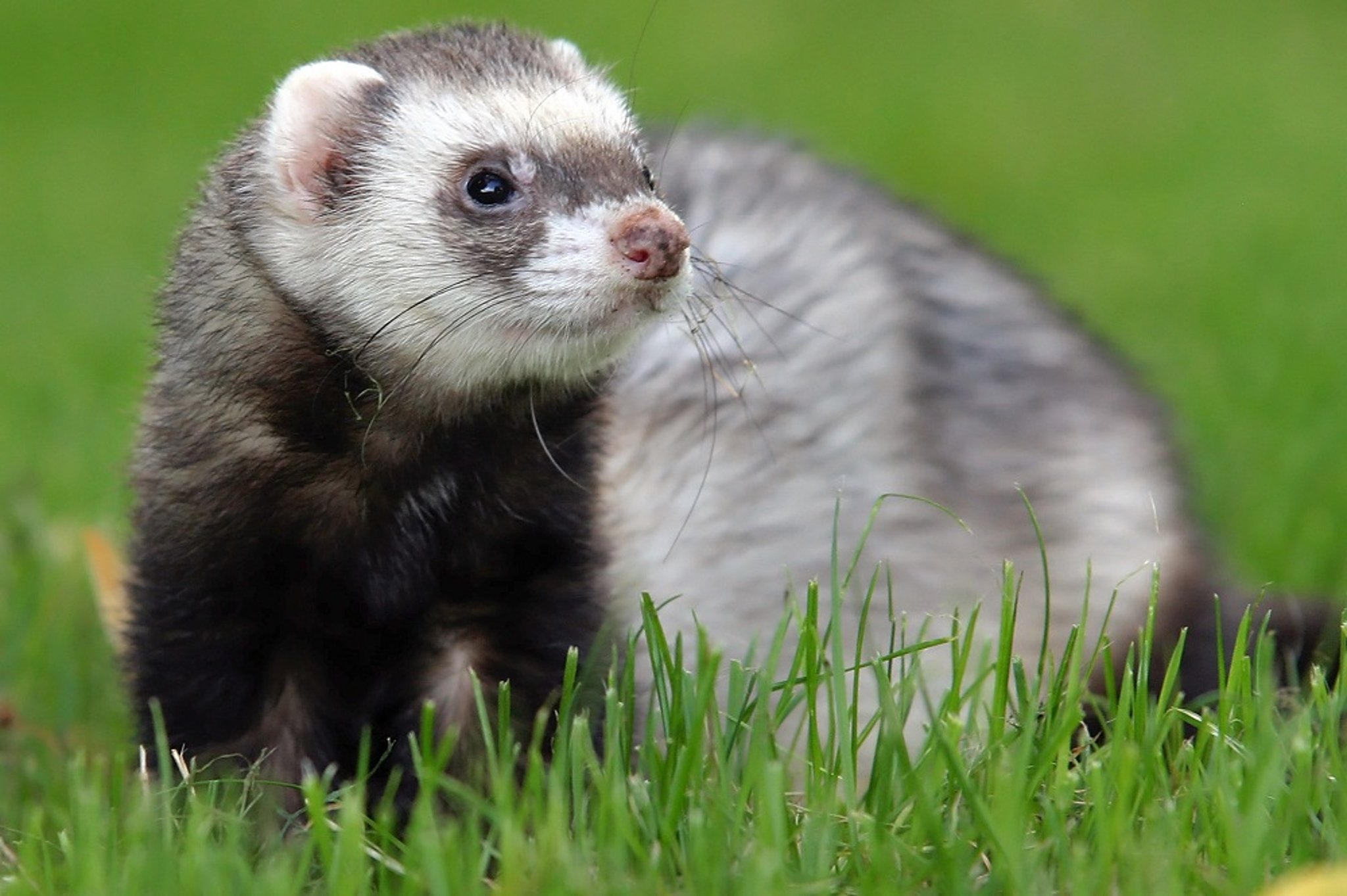Courtesy of Dr. N. J. Schoemaker.
The domestic ferret (Mustela putorius furo) is in the order Carnivora, family Mustelidae, and has lived in captivity for >2,000 years. Initially primarily used for hunting, ferrets are now common pets worldwide. They are also used as research animals, often in studies of the respiratory system, in particular influenza virus infections, and as a model for Helicobacter sp infection.
Physically, ferrets have a typical mustelid body shape, being long and slender. Their pelage has many color variations, with some of the most common including white with pink eyes; sable, cinnamon, and chocolate. White patches on the throat or toes are common. The coat color and density change with the season; it will darken and thicken in winter, then lighten and shed in summer.
Ferrets generally reach full size at 5–6 months of age and are considered adults at 1 year. The typical life span is 6 to 10 years, but many ferrets have a shortened life expectancy due to accidents or illnesses.
Male ferrets (hobs) are larger than female ferrets (jills) and can weigh as much as 4 pounds (2 kilograms) when intact, with an average weight of 2.5 pounds (1.2 kg) when neutered. Females can weigh as much as 2.5 pounds (1.2 kg) when intact, with an average weight of 1.75 pounds (0.8 kg) when neutered. Males also tend to have more body muscle and a large, wide, and rounded head, whereas females generally have a narrow, dainty head, with a thin, pointy nose,
For More Information
Also see pet health content regarding ferrets.




